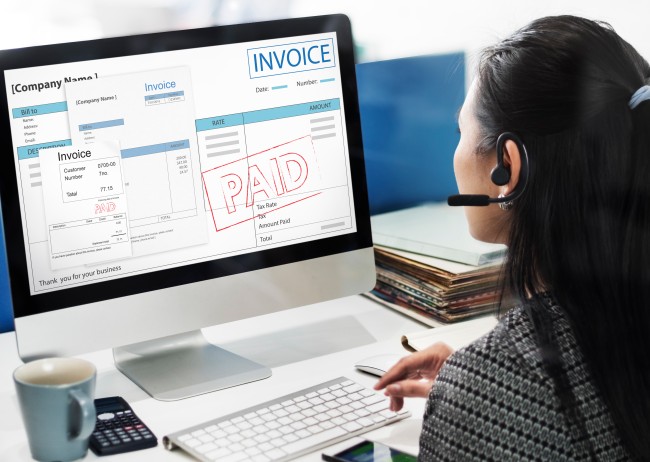
Billing is a critical aspect of accounting that requires accuracy, timeliness, and efficiency. Traditional manual billing methods can be laborious and prone to errors, resulting in tedious administrative tasks for accountants.
However, with the advent of time and billing software, automated billing workflows have revolutionized the way invoices are generated and managed.
In this article, we will explore how time and billing software streamlines invoicing processes and alleviates the administrative burden for accountants.
1. Centralized Client and Project Management
Time and billing software for accountants provides a centralized platform to manage client information and project details. Accountants can store client contact information, project specifications, and billing rates in one place, eliminating the need for manual record-keeping across multiple systems.
This centralized approach simplifies the invoicing process by ensuring accurate client and project data is readily available.
According to Mango Practice Management, having all client information in one place facilitates easy access and retrieval of relevant data. Accountants can quickly view project details, track billing rates, and access client communication history.
By streamlining client and project management, time and billing software enables accountants to navigate billing workflows more efficiently and reduce the risk of errors due to data fragmentation.
2. Accurate Time Tracking
Time tracking is a fundamental aspect of billing. Time and billing software enables accountants to track billable hours accurately.
The software allows them to log time spent on different tasks, projects, or clients in real time. By automating time tracking, accountants can ensure precision, reduce errors, and capture billable hours efficiently.
Moreover, time and billing software often includes built-in timers or timesheet functionalities. Accountants can easily start and stop timers for each task, accurately capturing the duration of their work.
This real-time tracking capability provides a granular level of accuracy and ensures that billable hours are not overlooked or forgotten, ultimately maximizing revenue for the accounting firm.
3. Automated Invoice Generation
Gone are the days of manual invoice creation. According to Verified Market Research, the market size for Invoice Automation Software was approximately USD 2,286.3 Million in 2021.
The research predicts that the market is expected to grow significantly and reach around USD 7,188.8 Million by 2030, with a CAGR of 14.26% between 2023 and 2030.
This indicates a substantial expansion and increasing adoption of invoice automation software in various industries.
Time and billing software automates the invoice generation process. It pulls the recorded time entries and billing rates, calculates the amounts, and generates professional-looking invoices automatically.
This automation not only saves time but also minimizes the chances of human errors associated with manual data entry.
Furthermore, automated invoice generation allows for consistent formatting and branding across all invoices.
Accountants can customize invoice templates to match the firm’s visual identity, including company logos, colors, and fonts. This cohesive branding enhances professionalism and strengthens the perception of the accounting firm in the eyes of clients.
4. Customizable Invoice Templates
Time and billing software offers customizable invoice templates that can be tailored to match a firm’s branding and specific requirements.
Accountants can include the company logo, customize the layout, and add specific details such as payment terms or itemized service descriptions. This customization enhances professionalism and strengthens the brand image of the accounting firm.
Additionally, customizable invoice templates allow accountants to communicate important billing information clearly. They can include breakdowns of services rendered, hourly rates, and any applicable discounts or additional charges.
By presenting detailed and transparent invoices, accountants can foster trust and credibility with their clients, ultimately reducing potential disputes or misunderstandings.
5. Efficient Billing Approval Workflow
Time and billing software streamlines the billing approval process by providing a structured workflow. Invoices can be sent electronically to clients for review and approval, eliminating the need for physical copies and manual signatures.
Accountants can track the status of invoices, send reminders, and receive prompt approvals, ensuring a smoother and faster billing cycle.
According to a post by TechFunnel, the automated billing approval workflow reduces the chances of invoices getting lost or delayed in transit. Accountants can set up notifications or reminders to alert clients about pending invoices, ensuring timely attention and action.
This streamlined approval process accelerates cash flow, improves client satisfaction, and minimizes the administrative burden on both accountants and clients.
6. Integration with Accounting Systems
Time and billing software frequently connects with accounting systems to further accelerate the invoicing process. For example, Small Business Trends highlights that the majority of accounting software easily integrates with business bank accounts.
This functionality allows for immediate updates on transactions, automatic categorization of expenses, and simplified monitoring of cash flows.
This integration allows for the automatic transfer of invoice data, eliminating the need for duplicate data entry. The synchronized data ensures consistency between billing records and financial statements, reducing reconciliation efforts and enhancing overall accuracy.
Moreover, integration with accounting systems facilitates financial visibility and real-time updates. When invoices are generated and approved in the time and billing software, the corresponding data seamlessly flows into the accounting system.
This integration eliminates the risk of manual errors associated with transferring data between different platforms, improving data integrity and enabling accountants to access up-to-date financial information with ease.
Final Thoughts
Time and billing software has revolutionized the invoicing process for accountants by streamlining workflows and reducing administrative burdens.
The insights drawn from the given content emphasize the key benefits of such software, including centralized client and project management, accurate time tracking, automated invoice generation, customizable templates, efficient billing approval workflows, and integration with accounting systems.
These insights reflect the transformative impact of time and billing software in improving efficiency, accuracy, and client satisfaction.
By leveraging these solutions, accountants can optimize their invoicing processes, save time, minimize errors, and focus on delivering value-added services to their clients.
